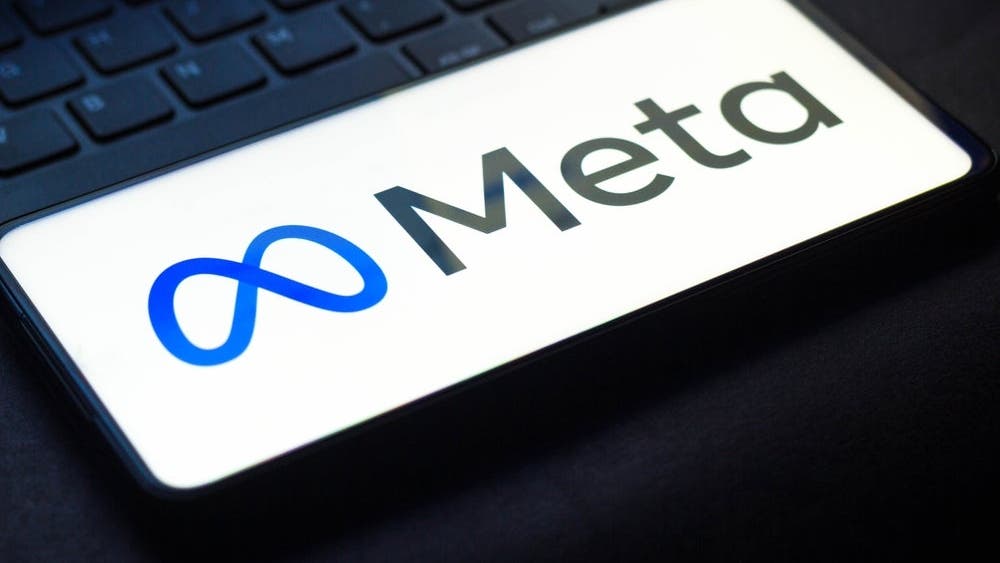CryptoCurrency
1 Super Semiconductor ETF That Could Turn $400 Per Month Into $1 Million, With Nvidia’s Help

Nvidia (NASDAQ: NVDA) pioneered the graphics processing unit (GPU) in 1999 to render computer graphics for gaming and multimedia purposes.
Since GPUs are capable of parallel processing — meaning they can seamlessly perform multiple tasks at the same time — they are also ideal for compute-intensive workloads like machine learning and artificial intelligence (AI) development. That led Nvidia to design new GPU architectures for data centers, and the semiconductor industry is now at the heart of the AI revolution.
Nvidia CEO Jensen Huang believes data center operators will spend $1 trillion building GPU-based AI infrastructure over the next five years. That’s an incredible financial opportunity, not only for his company, but for the entire semiconductor industry.
The iShares Semiconductor ETF (NASDAQ: SOXX) holds every leading chip stock, so it can give investors exposure to that trend in a diversified way. In fact, here’s how the exchange-traded fund (ETF) could turn $400 per month into $1 million over the long term.
Every top chip stock packed into one fund
The iShares Semiconductor ETF invests in U.S. companies that design, manufacture, and distribute chips — especially those poised to benefit from powerful trends like AI. Although ETFs can hold hundreds or even thousands of different stocks, the iShares Semiconductor ETF holds just 30, so it’s highly concentrated toward its singular theme.
Led by Nvidia, its top five holdings represent 37.9% of the entire value of its portfolio.
|
Stock |
iShares ETF Portfolio Weighting |
|---|---|
|
1. Nvidia |
8.88% |
|
2. Broadcom |
8.60% |
|
3. Advanced Micro Devices |
8.54% |
|
4. Qualcomm |
6.09% |
|
5. Texas Instruments |
5.84% |
Data source: iShares. Portfolio weightings are accurate as of Oct. 14, 2024, and are subject to change.
Nvidia was valued at $360 billion at the start of 2023. Less than two years later, it’s now the second largest company in the world, with a market capitalization of $3.2 trillion. The chip giant is delivering the revenue and earnings growth to support its incredible rise in value, thanks primarily to sales of its data center GPUs.
In the recent fiscal 2025 second quarter (ended July 28), Nvidia generated $26.3 billion in data center revenue, which was a whopping 154% increase from the year-ago period. The strong results are likely to continue, because the company is about to start shipping a new generation of GPUs based on its Blackwell architecture. Blackwell GPUs promise an incredible leap in performance of up to 30 times compared to Nvidia’s flagship H100 GPU, and Huang recently said demand for them is “insane.”
Broadcom also plays a key role in AI data centers. It makes AI accelerators (a type of chip) for hyperscale clients, which typically include tech giants like Microsoft and Amazon. It also makes Ethernet switches like the Tomahawk 5 and Jericho3-AI, which regulate how quickly data travels between GPUs and devices.
Advanced Micro Devices has emerged as a direct competitor to Nvidia in the GPU space. It will ship its new MI350X data center chip, which is designed to compete directly with the Blackwell lineup, in the second half of 2025. But AMD also makes neural processors (NPUs) for personal computers, which can handle AI workloads on-device, creating a faster user experience. This could be a big opportunity for the company outside the data center.
Beyond its top five positions, the iShares Semiconductor ETF also holds other top AI chip stocks like Micron Technology, which supplies memory and storage chips designed increasingly for AI workloads, and Taiwan Semiconductor Manufacturing, which fabricates many of the GPUs designed by Nvidia and AMD.
Turning $400 per month into $1 million
The iShares Semiconductor ETF has generated a compound annual return of 11.6% since its inception in 2001. However, its compound annual return has accelerated to 24.5% over the last 10 years, thanks to the rapid adoption of compute-intensive technologies like cloud computing, enterprise software, and AI.
The table below highlights the returns an investor could earn with $400 per month over 10 years, 20 years, and 30 years based on three different annual growth rates.
|
Monthly Investment |
Compound Annual Return |
Balance After 10 Years |
Balance After 20 Years |
Balance After 30 Years |
|---|---|---|---|---|
|
$400 |
11.6% |
$91,153 |
$379,042 |
$1,292,289 |
|
$400 |
18.1% (midpoint) |
$135,761 |
$951,779 |
$5,871,080 |
|
$400 |
24.5% |
$206,433 |
$2,535,833 |
$28,871,790 |
Calculations by author.
It’s unlikely that the iShares Semiconductor ETF will deliver an average annual return of 24.5% over the next 30 years — or even over the next 10 years, for that matter. The law of large numbers will eventually lead to a deceleration in growth. Nvidia is experiencing that phenomenon right now. Despite growing its data center revenue by 154% in its recent quarter, that was a much slower growth rate than the prior quarter just three months earlier, when its data center revenue jumped by 427%.
However, even if the ETF reverts back to an annual return of 11.6%, that will still be enough to turn $400 per month into $1 million over 30 years. While nothing is guaranteed, that is a more realistic expectation for investors.
Plus, ETFs can be very flexible. The iShares Semiconductor ETF will rebalance over time, so new companies will find their way into its top holdings if they are outperforming their peers, which will support further returns.
AI is likely to be a game changer for the semiconductor industry over the long term. Goldman Sachs believes the technology will add $7 trillion to the global economy in the coming decade. If that’s true, it will drive a consistent reinvestment into chips and infrastructure to fuel future growth cycles.
However, there is always a risk that AI will fail to live up to the hype. That’s why it’s important for investors to buy the iShares Semiconductor ETF only as part of a balanced portfolio.
Don’t miss this second chance at a potentially lucrative opportunity
Ever feel like you missed the boat in buying the most successful stocks? Then you’ll want to hear this.
On rare occasions, our expert team of analysts issues a “Double Down” stock recommendation for companies that they think are about to pop. If you’re worried you’ve already missed your chance to invest, now is the best time to buy before it’s too late. And the numbers speak for themselves:
-
Amazon: if you invested $1,000 when we doubled down in 2010, you’d have $21,121!*
-
Apple: if you invested $1,000 when we doubled down in 2008, you’d have $43,917!*
-
Netflix: if you invested $1,000 when we doubled down in 2004, you’d have $370,844!*
Right now, we’re issuing “Double Down” alerts for three incredible companies, and there may not be another chance like this anytime soon.
*Stock Advisor returns as of October 14, 2024
John Mackey, former CEO of Whole Foods Market, an Amazon subsidiary, is a member of The Motley Fool’s board of directors. Anthony Di Pizio has no position in any of the stocks mentioned. The Motley Fool has positions in and recommends Advanced Micro Devices, Amazon, Goldman Sachs Group, Microsoft, Nvidia, Qualcomm, Taiwan Semiconductor Manufacturing, Texas Instruments, and iShares Trust-iShares Semiconductor ETF. The Motley Fool recommends Broadcom and recommends the following options: long January 2026 $395 calls on Microsoft and short January 2026 $405 calls on Microsoft. The Motley Fool has a disclosure policy.
1 Super Semiconductor ETF That Could Turn $400 Per Month Into $1 Million, With Nvidia’s Help was originally published by The Motley Fool
CryptoCurrency
Do millionaires keep their money in checking accounts?

The habits of millionaires are a topic of interest when it comes to financial advice. After all, unless they received a large chunk of money as an inheritance or gift, most millionaires had to be smart with their money to get where they are.
Learning how millionaires accumulate wealth — and where they keep it — can provide valuable insights for anyone focused on growing their money. One common question is whether or not millionaires keep money in checking accounts.
Studies show that in recent years, millionaires are keeping a significant portion of their wealth in cash. According to CNBC’s , that portion was about 24% in 2023. While this doesn’t necessarily mean a quarter of a millionaire’s wealth is sitting in a checking account, it does indicate the importance of maintaining liquid assets. And a checking account can be a helpful tool for doing so — whether or not you’re a millionaire.
Anyone, regardless of net worth, can find value in a checking account. Checking accounts allow unlimited deposits and withdrawals, check writing, bill pay, and other features to help you manage your money day-to-day.
While millionaires may keep large portions of their wealth in other deposit accounts and investments, some may use a checking account to manage daily spending. Millionaires also recognize the importance of having liquid assets, like funds in checking and savings accounts. Accessible cash lets you cover unexpected expenses without needing to sell off investments, borrow money, or pay a penalty for tapping your retirement savings early.
The amount of money a millionaire keeps in their checking account is highly personal and depends on preference. However, because checking accounts rarely earn competitive — if any — interest, some millionaires intentionally limit their checking account balance. Some may choose to keep the bare minimum, such as a couple of months’ worth of essential expenses, in their checking accounts, keeping the rest of their wealth in more lucrative assets.
Regardless of preference, it would be surprising for a millionaire to keep more than $250,000 in a single checking account. That’s because the Federal Deposit Insurance Corp. (FDIC) only insures up to $250,000 in deposits per institution, per account holder.
While millionaires may use checking accounts for day-to-day financial transactions, they may also use some of the following accounts in addition to, or in place of, a checking account:
-
Savings accounts: Like checking accounts, savings accounts provide a high degree of liquidity, allowing you to access your money as needed for regular or unexpected expenses. High-yield savings accounts, in particular, give millionaires an extra bang for their buck. Some of the best accounts currently offer rates upwards of 4% versus the national average savings account rate of 0.46%.
-
Cash management accounts: Cash management accounts (CMAs) pay competitive interest rates while maintaining more accessibility than a savings account. Some CMAs come with a debit card and ATM access, and many provide extended FDIC coverage limits by “sweeping” additional deposits into partner banks. CMAs are available at brokerages, not banks, facilitating easy transfers between investment and cash accounts.
-
Money market accounts: Similar to CMAs, money market accounts combine features of checking and savings accounts, often paying competitive interest rates and providing check writing and ATM access. Banks and credit unions offer these accounts, which are federally insured. Minimum opening deposit and minimum balance requirements are often higher than those for standard savings accounts.
-
Retirement and tax-advantaged accounts: Millionaires understand the importance of investing for their later years, and retirement accounts such as 401(k)s and IRAs allow them to do so in a tax-advantaged way. Some retirement accounts, like 401(k)s, are offered by certain employers. Others, such as traditional and Roth IRAs, are available to anyone.
-
Brokerage accounts: The IRS limits contributions to tax-advantaged accounts, and millionaires typically invest beyond these limits. They do so with taxable brokerage accounts, which can hold investments such as stocks, bonds, and mutual funds without contribution limits.
-
Other investments, like real estate, commodities, and art: Some millionaires may decide to diversify their portfolio with other investment types. These could include real estate investments, such as investment properties or real estate investment trusts (REITs); commodities, such as metals or energy products; art; and more.
The amount of money millionaires keep in their checking accounts depends on personal preference. While some millionaires may keep six figures in their checking account to maintain a comfortable cash cushion, others may choose to keep the bare minimum in checking. You wouldn’t expect millionaires to keep more than $250,000 in a checking account, however, because balances over this threshold aren’t typically insured.
There’s no single bank that’s a favorite among millionaires; it’s another matter of preference. However, millionaires are likely to bank with institutions that offer private banking to those who meet specific financial requirements. Private banking may include wealth planning services, waived fees, dedicated bankers, and additional perks. J.P. Morgan Private Bank, Citi Private Bank, and Bank of America Private Bank are among some of the most popular banks for millionaires.
Billionaires may have checking accounts, but they likely use accounts that cater to ultra-high-net-worth individuals. These accounts may come with perks such as a dedicated banker, waived fees, and competitive interest rates. Alternatively, billionaires may opt for a cash management account with higher FDIC insurance coverage limits and checking account features.
No rule says you can’t have a million dollars in a checking account, but FDIC insurance typically only covers up to $250,000. Plus, you can get a bigger return on your investment by keeping $1 million elsewhere. One alternative is a cash management account, which acts like a checking account but generally earns higher interest. Plus, many cash management accounts insure more than the standard $250,000 by sweeping funds into multiple partner banks.
CryptoCurrency
Lumen And Meta Join Forces To Boost AI With Flexible, On-Demand Network Solutions


Lumen Technologies, Inc. (NYSE:LUMN) shares are trading higher on Monday after the company announced it is partnering with Meta Platforms, Inc. (NASDAQ:META) to significantly increase Meta’s network capacity and help drive its AI ambitions.
Lumen’s partnership offers Meta enhanced flexibility with secure, on-demand bandwidth, supporting its complex computing requirements and enabling it to serve billions daily.
Ashley Haynes-Gaspar, Lumen’s EVP and chief revenue officer, said, “We’ve transformed our company to meet this demand. As Meta’s customers use more AI services across its platforms, we’re helping provide Meta with a seamless, effortless, and flexible network that will meet its growing needs.”
Lumen Technologies said its Private Connectivity Fabric enables long-term network capacity for Meta’s AI.
Alex-Handrah Aimé, director of Meta’s Network Investments stated, “Our AI tools are performing increasingly more complex tasks including enabling conversations in a variety of languages and translating text to images in real time, while helping people interact with the world around them in new, immersive ways.”
Lumen will report third quarter 2024 results on November 5, 2024.
Investors can gain exposure to the stock via Invesco S&P SmallCap Utilities & Communication Services ETF (NASDAQ:PSCU) and First Trust Cloud Computing ETF (NASDAQ:SKYY).
Price Action: LUMN shares are up 9.50% at $7.38 at the last check Monday.
Image via Shutterstock
Read Next:
UNLOCKED: 5 NEW TRADES EVERY WEEK. Click now to get top trade ideas daily, plus unlimited access to cutting-edge tools and strategies to gain an edge in the markets.
Get the latest stock analysis from Benzinga?
This article Lumen And Meta Join Forces To Boost AI With Flexible, On-Demand Network Solutions originally appeared on Benzinga.com
© 2024 Benzinga.com. Benzinga does not provide investment advice. All rights reserved.
CryptoCurrency
US election optimism fuels $2.2B inflows in crypto products


CoinShares said the United States and Bitcoin led crypto investment product dynamics last week amid growing optimism over a potential Republican election win in the US.
CryptoCurrency
Quantum computer ‘threat’ to crypto is exaggerated — for now


Bitcoin’s private keys won’t be breached any time soon, but the industry still needs to transition to “post-quantum cryptography.”
CryptoCurrency
European investors pour record $105B into US Bitcoin ETFs


Despite record European inflows, Bitcoin has been unable to recover above the $70,000 psychological level since July.
CryptoCurrency
ApeCoin (APE) price jumps 100% on ApeChain launch


Apechain mainnet launch and LayerZero’s integration translated to 100% price upside for APE in recent days.
-

 Science & Environment1 month ago
Science & Environment1 month agoHyperelastic gel is one of the stretchiest materials known to science
-

 Technology4 weeks ago
Technology4 weeks agoIs sharing your smartphone PIN part of a healthy relationship?
-

 Science & Environment1 month ago
Science & Environment1 month ago‘Running of the bulls’ festival crowds move like charged particles
-

 Science & Environment1 month ago
Science & Environment1 month agoHow to unsnarl a tangle of threads, according to physics
-

 Science & Environment1 month ago
Science & Environment1 month agoMaxwell’s demon charges quantum batteries inside of a quantum computer
-

 Technology1 month ago
Technology1 month agoWould-be reality TV contestants ‘not looking real’
-

 Science & Environment4 weeks ago
Science & Environment4 weeks agoX-rays reveal half-billion-year-old insect ancestor
-

 Science & Environment1 month ago
Science & Environment1 month agoSunlight-trapping device can generate temperatures over 1000°C
-

 Science & Environment1 month ago
Science & Environment1 month agoLiquid crystals could improve quantum communication devices
-

 Science & Environment1 month ago
Science & Environment1 month agoQuantum ‘supersolid’ matter stirred using magnets
-

 Womens Workouts4 weeks ago
Womens Workouts4 weeks ago3 Day Full Body Women’s Dumbbell Only Workout
-

 Technology3 weeks ago
Technology3 weeks agoUkraine is using AI to manage the removal of Russian landmines
-

 TV3 weeks ago
TV3 weeks agoসারাদেশে দিনব্যাপী বৃষ্টির পূর্বাভাস; সমুদ্রবন্দরে ৩ নম্বর সংকেত | Weather Today | Jamuna TV
-

 Science & Environment1 month ago
Science & Environment1 month agoLaser helps turn an electron into a coil of mass and charge
-

 Science & Environment1 month ago
Science & Environment1 month agoWhy this is a golden age for life to thrive across the universe
-

 Science & Environment1 month ago
Science & Environment1 month agoA new kind of experiment at the Large Hadron Collider could unravel quantum reality
-

 Science & Environment1 month ago
Science & Environment1 month agoQuantum forces used to automatically assemble tiny device
-

 News3 weeks ago
News3 weeks agoMassive blasts in Beirut after renewed Israeli air strikes
-

 News2 weeks ago
News2 weeks agoNavigating the News Void: Opportunities for Revitalization
-

 Football3 weeks ago
Football3 weeks agoRangers & Celtic ready for first SWPL derby showdown
-

 Business3 weeks ago
Business3 weeks agoWhen to tip and when not to tip
-

 Science & Environment1 month ago
Science & Environment1 month agoA slight curve helps rocks make the biggest splash
-

 Science & Environment1 month ago
Science & Environment1 month agoNerve fibres in the brain could generate quantum entanglement
-

 Science & Environment1 month ago
Science & Environment1 month agoHow to wrap your mind around the real multiverse
-

 Science & Environment1 month ago
Science & Environment1 month agoITER: Is the world’s biggest fusion experiment dead after new delay to 2035?
-

 Science & Environment1 month ago
Science & Environment1 month agoNuclear fusion experiment overcomes two key operating hurdles
-

 News1 month ago
News1 month ago▶️ Hamas in the West Bank: Rising Support and Deadly Attacks You Might Not Know About
-

 MMA3 weeks ago
MMA3 weeks agoJulianna Peña trashes Raquel Pennington’s behavior as champ
-
Business3 weeks ago
DoJ accuses Donald Trump of ‘private criminal effort’ to overturn 2020 election
-

 Technology3 weeks ago
Technology3 weeks agoSamsung Passkeys will work with Samsung’s smart home devices
-

 News3 weeks ago
News3 weeks ago▶ Hamas Spent $1B on Tunnels Instead of Investing in a Future for Gaza’s People
-

 News1 month ago
News1 month ago▶️ Media Bias: How They Spin Attack on Hezbollah and Ignore the Reality
-

 Science & Environment1 month ago
Science & Environment1 month agoTime travel sci-fi novel is a rip-roaringly good thought experiment
-

 Technology4 weeks ago
Technology4 weeks agoWhy Machines Learn: A clever primer makes sense of what makes AI possible
-

 Technology3 weeks ago
Technology3 weeks agoMicrophone made of atom-thick graphene could be used in smartphones
-

 MMA2 weeks ago
MMA2 weeks ago‘Uncrowned queen’ Kayla Harrison tastes blood, wants UFC title run
-

 MMA3 weeks ago
MMA3 weeks agoPereira vs. Rountree prediction: Champ chases legend status
-

 Sport3 weeks ago
Sport3 weeks agoBoxing: World champion Nick Ball set for Liverpool homecoming against Ronny Rios
-

 Sport3 weeks ago
Sport3 weeks agoWales fall to second loss of WXV against Italy
-

 Science & Environment1 month ago
Science & Environment1 month agoPhysicists have worked out how to melt any material
-
News1 month ago
the pick of new debut fiction
-

 News1 month ago
News1 month agoOur millionaire neighbour blocks us from using public footpath & screams at us in street.. it’s like living in a WARZONE – WordupNews
-

 Technology1 month ago
Technology1 month agoMeta has a major opportunity to win the AI hardware race
-

 Technology3 weeks ago
Technology3 weeks agoMusk faces SEC questions over X takeover
-

 Sport3 weeks ago
Sport3 weeks agoWorld’s sexiest referee Claudia Romani shows off incredible figure in animal print bikini on South Beach
-

 MMA3 weeks ago
MMA3 weeks agoDana White’s Contender Series 74 recap, analysis, winner grades
-

 Technology3 weeks ago
Technology3 weeks agoThe best budget robot vacuums for 2024
-

 Sport3 weeks ago
Sport3 weeks agoMan City ask for Premier League season to be DELAYED as Pep Guardiola escalates fixture pile-up row
-

 Technology3 weeks ago
Technology3 weeks agoThis AI video generator can melt, crush, blow up, or turn anything into cake
-

 News3 weeks ago
News3 weeks agoFamily plans to honor hurricane victim using logs from fallen tree that killed him
-

 MMA3 weeks ago
MMA3 weeks agoPereira vs. Rountree preview show live stream
-

 Sport3 weeks ago
Sport3 weeks agoCoco Gauff stages superb comeback to reach China Open final
-

 News3 weeks ago
News3 weeks agoGerman Car Company Declares Bankruptcy – 200 Employees Lose Their Jobs
-

 News3 weeks ago
News3 weeks ago‘Blacks for Trump’ and Pennsylvania progressives play for undecided voters
-

 Technology3 weeks ago
Technology3 weeks agoTexas is suing TikTok for allegedly violating its new child privacy law
-

 Sport3 weeks ago
Sport3 weeks agoSturm Graz: How Austrians ended Red Bull’s title dominance
-

 Money3 weeks ago
Money3 weeks agoWetherspoons issues update on closures – see the full list of five still at risk and 26 gone for good
-

 News2 weeks ago
News2 weeks agoHeavy strikes shake Beirut as Israel expands Lebanon campaign
-

 TV2 weeks ago
TV2 weeks agoLove Island star sparks feud rumours as one Islander is missing from glam girls’ night
-
Business3 weeks ago
Bank of England warns of ‘future stress’ from hedge fund bets against US Treasuries
-

 Business3 weeks ago
Business3 weeks agoChancellor Rachel Reeves says she needs to raise £20bn. How might she do it?
-

 MMA3 weeks ago
MMA3 weeks agoAlex Pereira faces ‘trap game’ vs. Khalil Rountree
-

 News3 weeks ago
News3 weeks agoHeartbreaking end to search as body of influencer, 27, found after yacht party shipwreck on ‘Devil’s Throat’ coastline
-
Business3 weeks ago
Sterling slides after Bailey says BoE could be ‘a bit more aggressive’ on rates
-

 MMA3 weeks ago
MMA3 weeks agoUFC 307 preview show: Will Alex Pereira’s wild ride continue, or does Khalil Rountree shock the world?
-

 Science & Environment1 month ago
Science & Environment1 month agoPhysicists are grappling with their own reproducibility crisis
-

 Football3 weeks ago
Football3 weeks agoSimo Valakari: New St Johnstone boss says Scotland special in his heart
-

 TV3 weeks ago
TV3 weeks agoPhillip Schofield accidentally sets his camp on FIRE after using emergency radio to Channel 5 crew
-

 News3 weeks ago
News3 weeks agoWoman who died of cancer ‘was misdiagnosed on phone call with GP’
-

 Technology3 weeks ago
Technology3 weeks agoThe best shows on Max (formerly HBO Max) right now
-

 Science & Environment3 weeks ago
Science & Environment3 weeks agoMarkets watch for dangers of further escalation
-

 Technology3 weeks ago
Technology3 weeks agoJ.B. Hunt and UP.Labs launch venture lab to build logistics startups
-

 Sport3 weeks ago
Sport3 weeks agoChina Open: Carlos Alcaraz recovers to beat Jannik Sinner in dramatic final
-

 TV3 weeks ago
TV3 weeks agoMaayavi (මායාවී) | Episode 23 | 02nd October 2024 | Sirasa TV
-

 Technology3 weeks ago
Technology3 weeks agoPopular financial newsletter claims Roblox enables child sexual abuse
-

 News3 weeks ago
News3 weeks agoHull KR 10-8 Warrington Wolves – Robins reach first Super League Grand Final
-

 Technology3 weeks ago
Technology3 weeks agoOpenAI secured more billions, but there’s still capital left for other startups
-
Business3 weeks ago
Head of UK Competition Appeal Tribunal to step down after rebuke for serious misconduct
-
Business3 weeks ago
The search for Japan’s ‘lost’ art
-

 Sport3 weeks ago
Sport3 weeks agoAaron Ramsdale: Southampton goalkeeper left Arsenal for more game time
-

 MMA3 weeks ago
MMA3 weeks agoKetlen Vieira vs. Kayla Harrison pick, start time, odds: UFC 307
-

 News3 weeks ago
News3 weeks agoBalancing India and China Is the Challenge for Sri Lanka’s Dissanayake
-

 Entertainment3 weeks ago
Entertainment3 weeks ago“Golden owl” treasure hunt launched decades ago may finally have been solved
-

 Science & Environment1 month ago
Science & Environment1 month agoA tale of two mysteries: ghostly neutrinos and the proton decay puzzle
-
Business4 weeks ago
Eurosceptic Andrej Babiš eyes return to power in Czech Republic
-

 Sport1 month ago
Sport1 month agoJoshua vs Dubois: Chris Eubank Jr says ‘AJ’ could beat Tyson Fury and any other heavyweight in the world
-
News1 month ago
The Project Censored Newsletter – May 2024
-

 Technology4 weeks ago
Technology4 weeks agoArtificial flavours released by cooking aim to improve lab-grown meat
-

 Technology3 weeks ago
Technology3 weeks agoUniversity examiners fail to spot ChatGPT answers in real-world test
-

 Technology3 weeks ago
Technology3 weeks agoEpic Games CEO Tim Sweeney renews blast at ‘gatekeeper’ platform owners
-

 News3 weeks ago
News3 weeks agoLiverpool secure win over Bologna on a night that shows this format might work
-

 Technology3 weeks ago
Technology3 weeks agoGmail gets redesigned summary cards with more data & features
-

 Technology3 weeks ago
Technology3 weeks agoMicrosoft just dropped Drasi, and it could change how we handle big data
-

 MMA3 weeks ago
MMA3 weeks agoKayla Harrison gets involved in nasty war of words with Julianna Pena and Ketlen Vieira
-

 Technology3 weeks ago
Technology3 weeks agoApple iPhone 16 Plus vs Samsung Galaxy S24+
-
Business3 weeks ago
Maurice Terzini’s insider guide to Sydney
-

 Health & fitness3 weeks ago
Health & fitness3 weeks agoNHS surgeon who couldn’t find his scalpel cut patient’s chest open with the penknife he used to slice up his lunch
-

 Technology3 weeks ago
Technology3 weeks agoHow to disable Google Assistant on your Pixel Watch 3
-

 Business3 weeks ago
Business3 weeks agoStark difference in UK and Ireland’s budgets
-

 Money3 weeks ago
Money3 weeks agoPub selling Britain’s ‘CHEAPEST’ pints for just £2.60 – but you’ll have to follow super-strict rules to get in


You must be logged in to post a comment Login